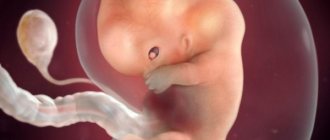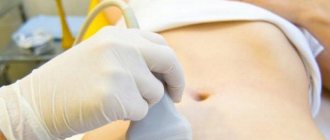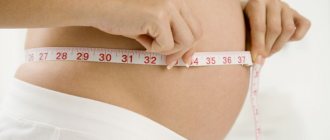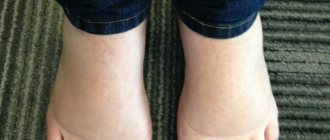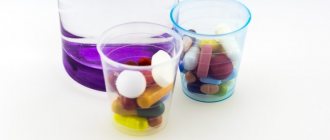A mother's main job begins with the birth of her baby. It is especially important to prepare for feeding. With the right attitude, the baby will be full, which means the mother will be happy and calm.
During pregnancy, the body actively prepares for lactation. Frequent advice - to avoid stress in every possible way - is also relevant for lactation. Stress is not only various worries, unfavorable events at work and in personal life, but also overwork. Stressful conditions affect hormonal levels, which can lead to problems with milk supply.
A pregnant woman needs to concentrate on the positive aspects, creating favorable circumstances for bearing a child.
Preparing for feeding - breast massage
In children's clinics there are still posters on breastfeeding with advice to rub your breasts with a rough washcloth and put hard rags in your bra. Now these methods are no longer relevant, moreover, they are not recommended by mammologists. Irritating actions increase the risk of cracked nipples during feeding.
To maintain the shape of the bust and prevent lactostasis, mammologists advise performing a small massage. The mammary glands are kneaded with gentle movements in a circle. It is also recommended to do a relaxing massage in the shower with streams of water from a watering can or using a soft washcloth.
During pregnancy, a woman should pay attention to the shape of the nipple. If the shape of the nipple is retracted (when it is in the dimple) or flat (when the nipple does not protrude above the areola), then you need to regularly massage them with pulling movements of your fingers using baby cream.
Proper latching of the baby to the breast allows you to avoid microtraumas, and the baby receives milk and does not remain hungry. Therefore, it would be a good idea to study information on methods of breastfeeding and what proper nipple latching looks like. A lactation specialist can also provide assistance with breastfeeding.
What exercises and massage can you do?
Breast massage for nursing mothers
A gentle manual massage perfectly prepares the breasts for feeding the baby and performs a number of other useful functions:
- Prevention of lactostasis. Even if there are areas with stagnant milk in the mammary glands, they are activated.
- Improves blood circulation, which strengthens the breasts and increases lactation.
- Oils that are recommended for massage during feeding tone the skin and help get rid of stretch marks.
Technique of massage manipulations
:
- palms are lubricated with natural oil;
- the left hand is placed under the mammary gland, the right hand above it;
- The breasts are massaged in a circular motion;
- then the massage turns into stroking movements towards the nipple, gradually covering the entire surface of the mammary gland.
The nature of the touch is delicate and light, without causing discomfort. The oil should not touch the nipple and areola. This care is recommended after each feeding for 3-4 minutes.
Exercises for nursing
Exercises for pregnant women were listed above, now you can turn to those that are intended for nursing mothers.
Exercise will help improve the quality of feeding, since movement increases blood flow, which contributes to better milk production.
It is necessary to exercise in doses so that lactic acid is not produced in the muscles, which will make the baby’s food taste bitter.
Exercise No. 1
- palms folded in front of you, elbows placed at chest level;
- pressure is created between the palms for 10 seconds;
- repeat – 5 times.
Exercise No. 2
- straight arms rotate around the shoulder joint in a circular motion;
- manipulations are performed first with one hand, then with the other.
Excessive exercise can spoil your milk!
Exercise No. 3
- The hands imitate movements as in breaststroke swimming.
Exercise No. 4
- palms are placed in the armpits;
- Elbows make circular movements forward/backward.
Exercise No. 5
- in a tilt parallel to the floor, swing your arms to the sides.
Nursing bra A special bra is an integral part of preparing the mammary glands for feeding. Under no circumstances should it squeeze the chest, but at the same time, you should not take a size “for growth.” The straps of the product should be wide and well adjustable and secure the mammary glands. It is advisable to choose a model made from natural fabrics that will provide access to oxygen. A properly selected bra is also necessary to maintain the shape and firmness of the bust.
Additional physiotherapeutic procedures to improve lactation
:
- breast baths with warm water;
- shared bath with only warm water for relaxation;
- warming hands and feet in hot water before feeding;
- acupuncture or special applicators on the back;
- massage of the collar area, the area of the back between the shoulder blades.
What you need to prepare in case of force majeure
After the baby is born, he is brought to the breast, and the baby receives his first food - drops of colostrum, and also gets acquainted with the mother's immunity. At the same time, no one is immune from the occurrence of moments that prevent the baby from feeding from the first hours of life.
Surgeries during childbirth, including caesarean section, can delay the flow of milk, and situations may also arise when the baby is separated from the mother in the hospital. Therefore, you can choose and buy a breast pump in advance.
Constant pumping before each feeding stimulates the production of prolactin, a special hormone that is responsible for lactation. Gradually, the amount of milk with regular use of the breast pump will increase, and the baby will not remain hungry.
Breast care during breastfeeding
After childbirth, a woman’s breasts change: they increase in size and, regardless of whether the woman is breastfeeding or not, the woman produces milk. Sometimes breast and nipple problems can develop during breastfeeding. Proper care for her can help prevent problems and complications for proper breastfeeding.
During the first few days after giving birth, a woman's body produces a small amount of colostrum, a thick, sticky, yellow liquid rich in protein. Within approximately 2-5 days after the birth of the baby, a woman begins to produce full-fledged breast milk. Health problems can cause a delay in breast milk production. Initially flat or inverted nipples can also cause milk to come in later.
In the first weeks after childbirth, the mother's breasts become larger, they become engorged - they fill with milk and become heavier. Breastfeeding reduces chest pressure. During feeding, when milk comes out of the breast, a woman may feel discomfort. After 7 days, as a rule, engorgement decreases and pain dulls.
If at first after childbirth your breasts give you discomfort: they hurt and are too heavy, then you can try to relieve the pain and soothe the breasts by applying a towel soaked in cool water to it.
Problems that may arise during breastfeeding
Sore nipples
When you start breastfeeding, you may feel pain in your nipples. Minor pain is considered normal. To reduce nipple soreness, you can apply warm, wet compresses directly to the nipples. If the soreness does not decrease and you experience pain every time you feed, then you should consult a doctor.
Painful cracked and bleeding nipples are not normal side effects of breastfeeding. Continued pain is a warning sign that you have a problem that needs to be addressed. If your nipples begin to crack or bleed, you need to seek professional help.
The main reason for cracked nipples or bleeding from them is improper feeding. Using a breast pump improperly can also damage your nipples. Before purchasing a breast pump, consult your doctor.
Stagnation of the milk ducts causes painful sensations in the breasts. Congestion occurs when the breasts are not completely emptied during feeding. After feeding, remove any remaining milk from the breast using a breast pump. To avoid congestion, prefer light underwear that does not pinch your breasts: do not wear underwire bras or tight clothing.
Congestion in the milk ducts and engorgement can lead to an infection of the breast tissue called mastitis. Mastitis causes redness and tenderness of the breasts and may be accompanied by chills and fever.
If you experience unpleasant, painful sensations, lumps in the breasts, cracked nipples and other breast changes that bother you, consult a doctor for qualified advice.
Breast care during feeding
During breastfeeding, women's breasts require special care: careful treatment and attention to them will benefit both you and your baby. Here are some tips to help you keep your breasts healthy.
- Wear special bras for nursing mothers: they effectively support the breasts and are easy to use. When buying a bra, give preference to one that is made of cotton and has even, non-rough seams. Cotton provides good air circulation.
- Check your nipples after every feeding. If your nipples are sore, cracked or bleeding, consult a doctor immediately for help. There is no benefit from feeding a sore breast for a woman, and for a child there is little: the child will feel your anxiety during feeding.
- Plain water is the best way to wash your breasts during breastfeeding. Other products can dry out the skin, remove the skin's natural oils, and promote cracking.
- If you are unsure about what products to use to care for your breasts, consult your doctor.
- After each feeding, squeeze a little milk onto your nipples. Milk is a natural moisturizer during breastfeeding and will prevent dryness.
- After feeding, leave the flaps on your nursing bra open for 10 to 15 minutes.
- Do not use plastic pads inside your bra. Change them every time they become wet. Wet earbuds promote bacterial growth and damage the skin.
- If you prefer to use disposable wet wipes after feeding, choose 100% cotton wipes that are fragrance-free and alcohol-free.
Breastfeeding is a priority, but if problems arise with the breasts during lactation, it should be remembered that each case is individual and must be considered in the interests of the child while maintaining the health of the mother.
Sokolovskaya M.N. AOO#3
The baby is born! How to feed?
There are two approaches to feeding - on the clock or on demand. Each of them has its pros and cons. You can study both methods in advance to decide, or you can try them one by one to understand which one is closer to mother and child.
In both cases, there remains the possibility of a lactation crisis, when the amount of milk suddenly decreases, or the baby’s demands increase. Patience and calmness, as well as the advice and assistance of an experienced mammologist, will help in this situation.
Not always and not everyone’s breastfeeding goes smoothly the first time. The main thing is to be patient and believe in yourself.
Heredity and breast sensitivity
Of course, heredity has a huge impact on the sensitivity of the skin and nipples. It is on this that the predisposition to special sensitivity of nerve endings and an overactive reaction to external stimuli (sucking and biting of the nipple by a child) depends. If a pregnant mother had sensitive nipples and cracks during breastfeeding, then her daughter has an increased risk of developing the same condition. But if a pregnant woman takes proper care of her body, takes care of her nipples, leads a healthy lifestyle, and eats right, then she can prevent possible consequences for her health. A lot also depends on proper care and lifestyle.
The most relevant and useful information for modern parents is in our newsletter. We already have over 30,000 subscribers!
Pumping
If, after a hot flash, there is swelling in the chest, causing a fever, you need to wait a day from the start of the hot flash, often put the baby to the breast, and change breasts.
If there is no relief, the breasts are painful, swollen, the temperature has risen, then you need to express as much as possible no later than 9 pm and no earlier than 9 am.
Afterwards, 2-3 pumping sessions are required until the breasts are relieved and not empty. If you start actively pumping, this will lead to a large number of hot flashes with possible stagnation of milk - lactostasis.



